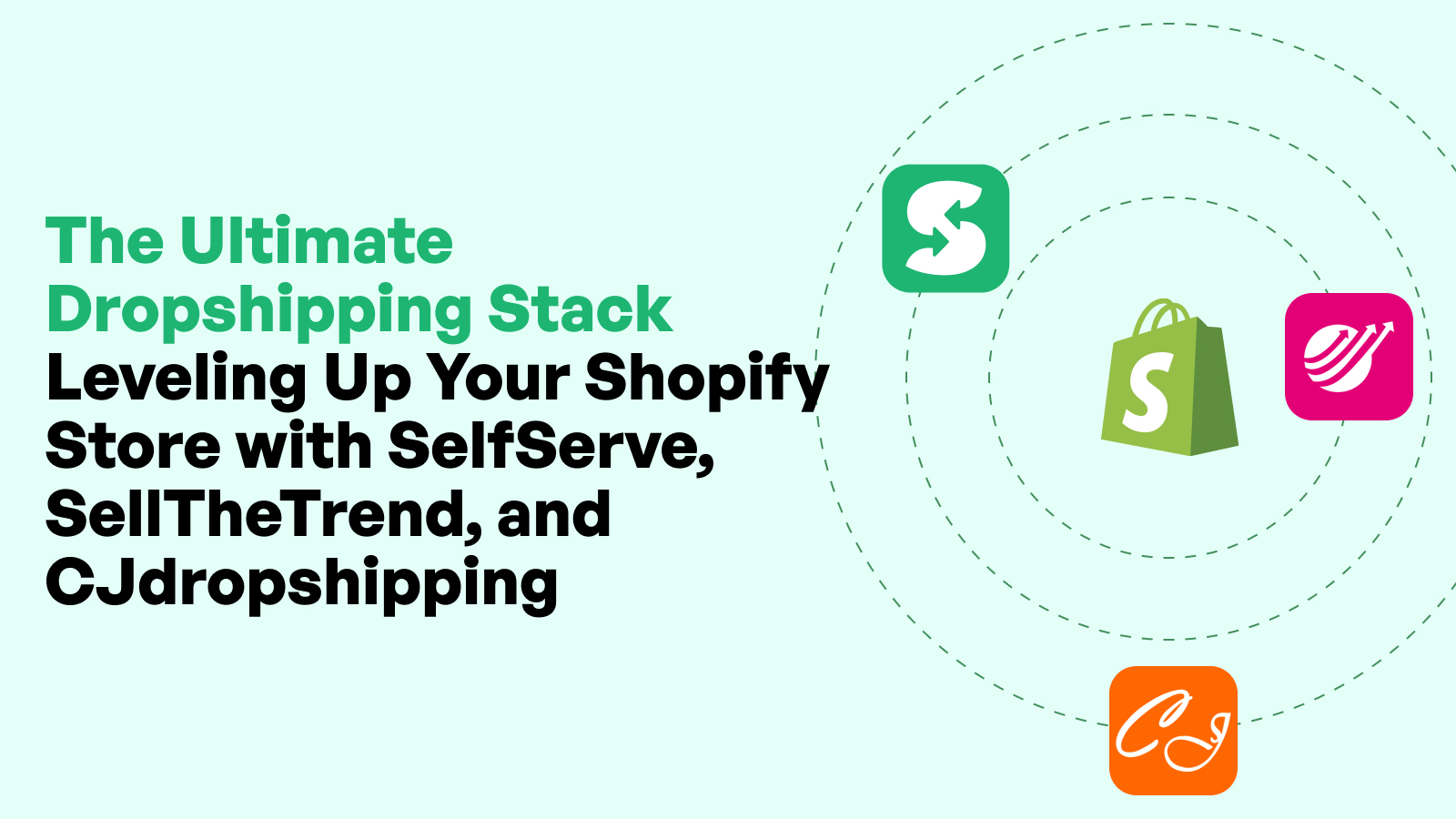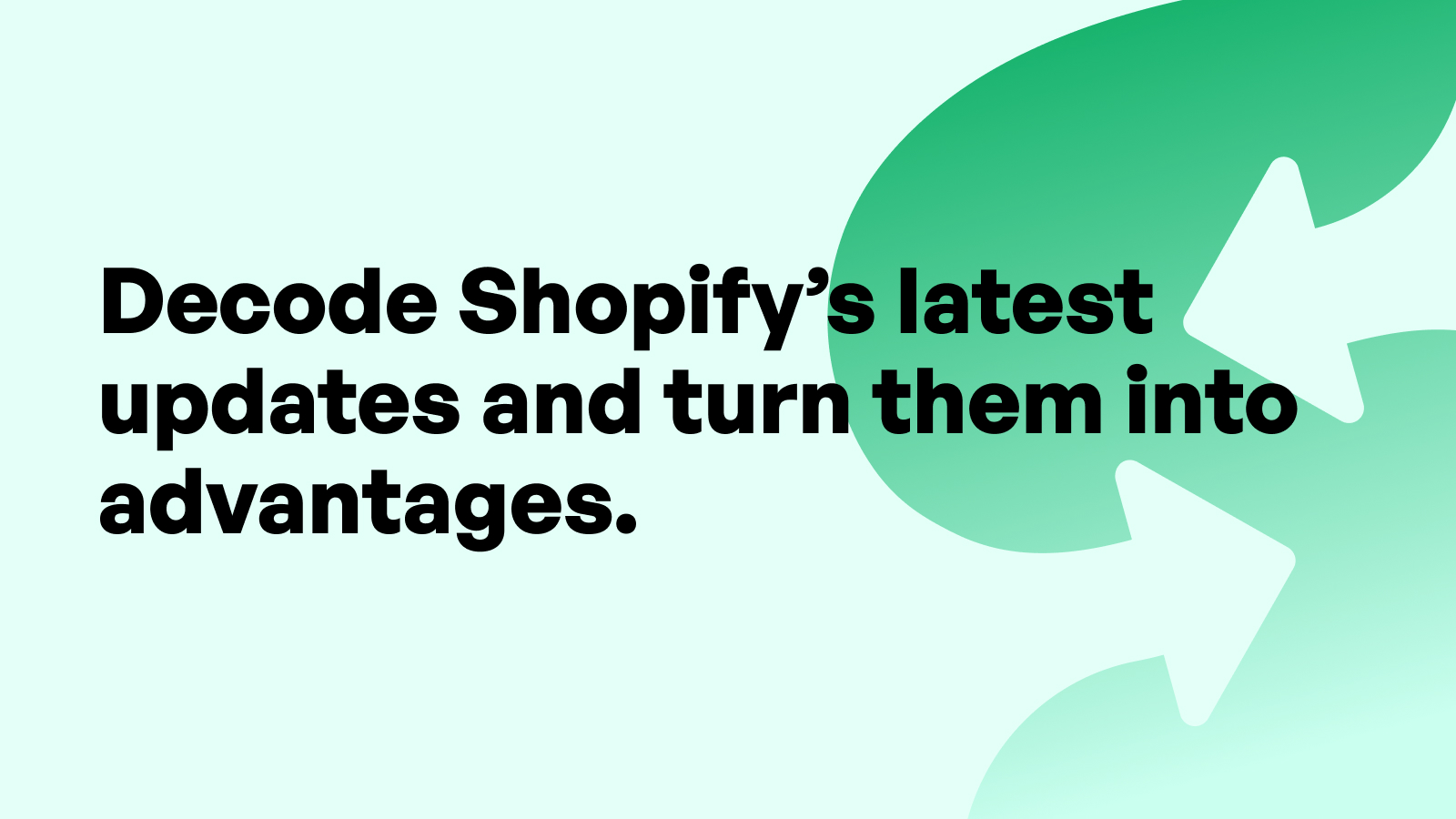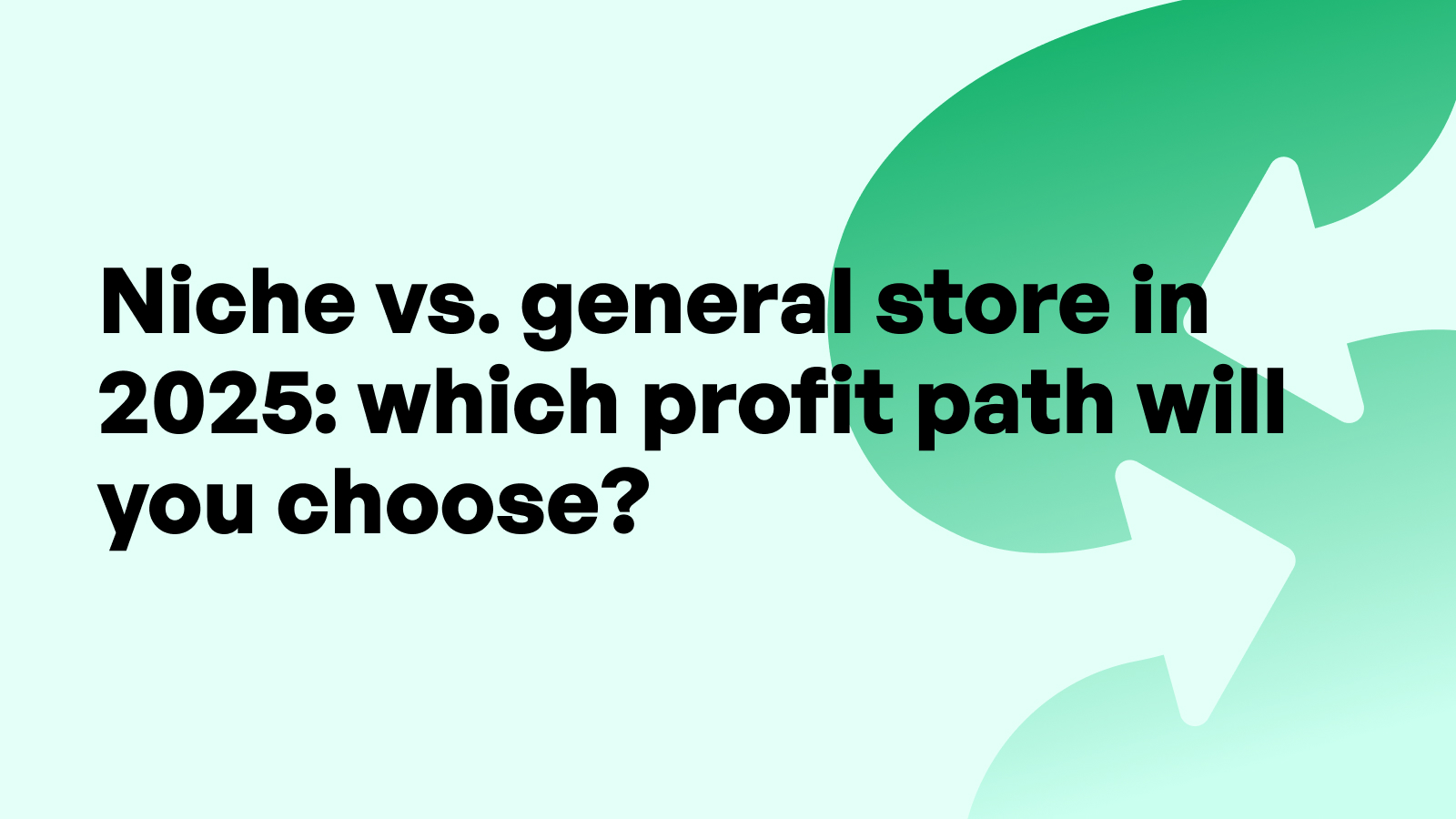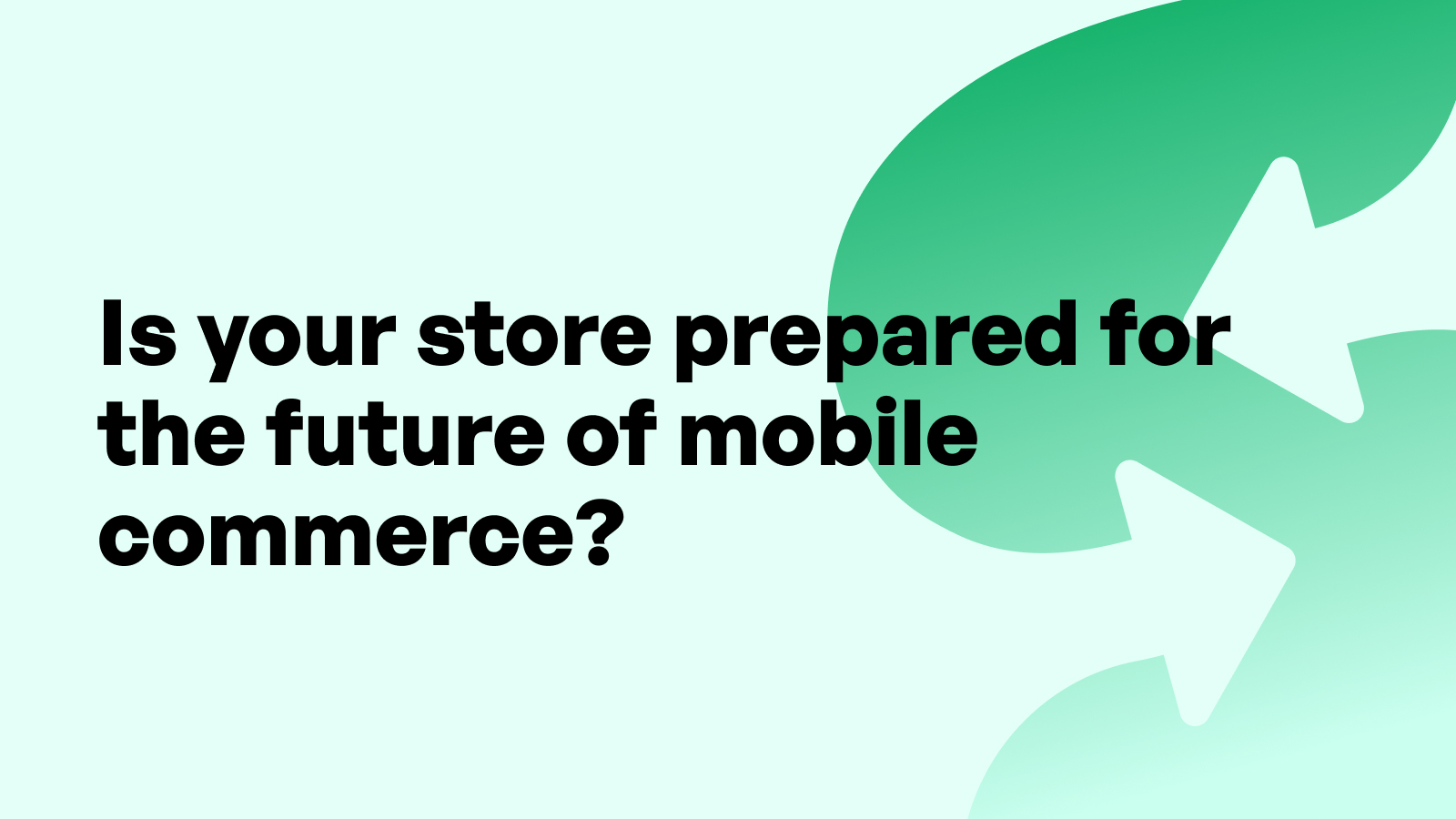The Beginner’s Guide to Shopify Subscription Products
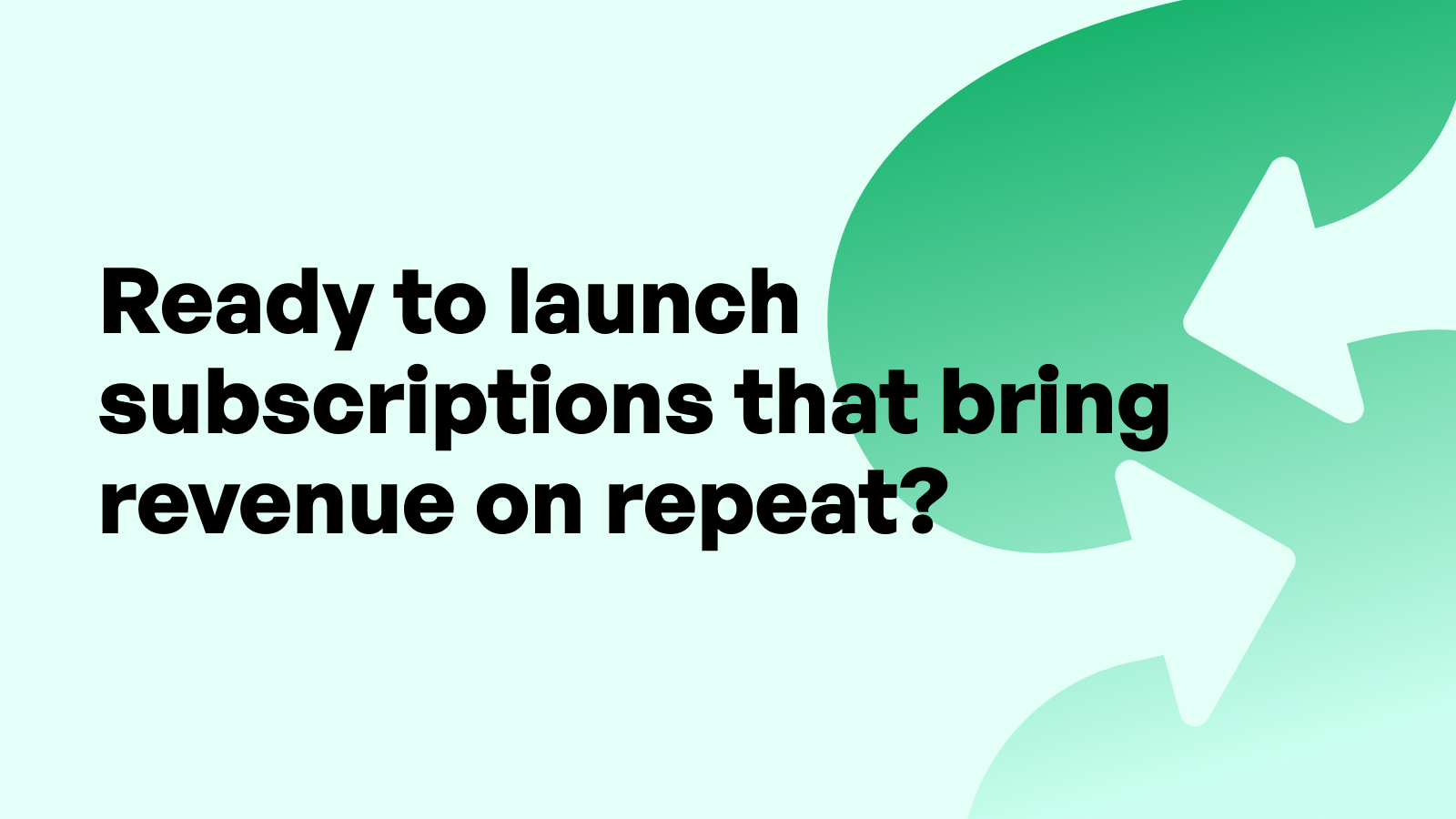
Introduction to Subscription Commerce
The Rise of the Subscription Economy
Over the last decade, the subscription economy has transformed how consumers purchase and experience products. From streaming platforms to curated monthly boxes, the idea of recurring value has reshaped retail. E-commerce, in particular, has seen a dramatic shift as more businesses transition from one-time transactions to recurring relationships. Shopify merchants have embraced this shift to capture long-term customer loyalty and predictable revenue streams.
In 2024, subscription-based commerce continues to grow, supported by customer demand for convenience, customization, and affordability. This model helps brands create ongoing engagement with their audience while enabling revenue forecasting and reduced customer acquisition costs over time. Shopify’s robust ecosystem, combined with a rapidly evolving app marketplace, makes it easier than ever for merchants to offer subscription products that align with customer expectations.
Why Subscription Models Work for E-commerce
The success of subscription commerce lies in its ability to build customer loyalty and reduce friction. For Shopify merchants, this model offers an opportunity to create a seamless shopping experience where customers are billed and shipped products automatically at regular intervals. It removes the need for repeat marketing campaigns and provides opportunities for upselling, bundling, and enhancing customer value over time.
Subscriptions also provide Shopify merchants with crucial data insights into customer behavior. By tracking churn, lifetime value, and engagement patterns, merchants can optimize offerings and fine-tune marketing strategies. With the rise of DTC brands and niche audiences, Shopify stores can use subscription models to strengthen brand affinity and simplify inventory management.
Understanding Shopify’s Subscription Capabilities
Shopify's Native Support for Subscription Products
Shopify introduced native subscription support through its Subscription API, enabling a more secure and integrated way for developers and apps to manage recurring payments. This allows Shopify merchants to offer products that can be purchased on a recurring basis without relying on custom workarounds or off-platform billing systems.
Native subscription support means better integration with Shopify Checkout, improved customer experience, and compliance with payment and privacy standards. The model is particularly effective for physical goods such as coffee, supplements, personal care products, and pet supplies — all of which benefit from regular usage and replenishment cycles.
Through the admin panel, merchants can tag products as subscription-enabled and manage subscription plans. Shopify’s infrastructure ensures consistent performance across store themes, mobile devices, and customer accounts, removing the complexity that used to plague earlier subscription solutions.
How Shopify Handles Recurring Billing and Payments
Shopify's architecture for recurring billing relies on the Shopify Checkout Extensibility framework. Payments are processed through Shopify Payments or third-party gateways that are compliant with the Subscription API. This gives Shopify merchants flexibility while maintaining security and ease of use.
Customers are charged automatically based on the billing interval selected — whether it’s weekly, monthly, or quarterly. Shopify also supports customer notification workflows, including subscription confirmation, upcoming charge alerts, and failed payment retries.
Importantly, all recurring orders appear within the existing order dashboard, making it easier for Shopify merchants to manage fulfillment and reporting without juggling separate systems. Combined with native analytics, this structure helps merchants stay in control of recurring revenue operations.
Key Limitations of Shopify’s Subscription API
Despite its advancements, Shopify’s Subscription API still has a few constraints Shopify merchants should understand. One of the primary limitations is the lack of native support for prepaid subscriptions or bundled subscription logic without third-party app support.
Additionally, subscription functionalities are limited to products sold via the Online Store sales channel. Merchants using Shopify POS or custom storefronts must work within tighter constraints or rely on API extensions. Flexibility in terms of dynamic pricing, discounts, and conditional upsells may also require advanced app integrations.
However, these limitations are steadily being addressed by app developers and Shopify’s roadmap. For most use cases, especially beginners, Shopify’s current capabilities — when combined with the right apps — are more than sufficient to launch and scale a subscription model.
Choosing the Right Subscription App for Your Shopify Store
Evaluating Features: Billing, Flexibility, and Customer Portals
For Shopify merchants venturing into subscriptions, selecting the right app is critical. While Shopify’s native API lays the foundation, most merchants will need a third-party app to unlock advanced features such as customizable billing intervals, comprehensive customer portals, and robust analytics. The best subscription apps for Shopify merchants allow for full control over billing schedules, renewal dates, trial offers, and subscription cancellation policies.
A quality subscription app should also provide a frictionless experience for customers. This includes self-service account management, upgrade/downgrade options, and pausing subscriptions when needed. Seamless integration with Shopify Checkout is equally important to maintain conversion rates and compliance with Shopify’s guidelines.
Additionally, app support, onboarding experience, and ease of integration with other Shopify tools — such as email marketing and CRM platforms — can heavily influence your success. Prioritize flexibility, scalability, and support when evaluating your options.
Top-Rated Subscription Apps for Shopify Merchants
Recharge Subscriptions
Recharge is one of the most established subscription apps in the Shopify ecosystem. Known for its powerful API and deep integration capabilities, Recharge supports everything from simple recurring purchases to complex subscription workflows. It offers multi-language and multi-currency support, enabling global expansion for Shopify merchants.
The app includes a built-in customer portal, automatic dunning (retrying failed payments), advanced analytics, and integrations with Klaviyo, Gorgias, and other leading tools. Recharge is a solid choice for merchants prioritizing scale and customization.
Appstle Subscriptions
Appstle has quickly become a favorite among new Shopify merchants for its user-friendly interface and affordability. It offers flexible subscription options, including build-a-box, prepaid plans, and member-only subscriptions. The app is lightweight and integrates well with Shopify’s checkout and analytics.
Appstle stands out for offering robust support and regular feature updates. It is ideal for merchants who need advanced capabilities without the learning curve or cost of enterprise-grade apps.
Bold Subscriptions
Bold Subscriptions is another long-time player in the Shopify app marketplace. It provides customizable subscription workflows, smart cancellation prevention tools, and native analytics. One standout feature is the app’s ability to prompt customers with upsells and add-ons during the subscription flow.
Bold is particularly suited for Shopify merchants looking to build loyalty programs or hybrid models that mix one-time purchases with subscriptions. The UI is polished, and its customer portal allows subscribers to easily manage their orders.
Comparing Pricing Models and Value Propositions
Subscription app pricing often varies based on features, order volume, and customer count. Recharge, for example, offers tiered pricing based on revenue, which is suitable for scaling merchants but may be too steep for beginners. Appstle offers a more budget-friendly flat rate with generous feature access. Bold operates with a combination of flat-rate pricing and optional add-ons.
Shopify merchants should evaluate both short-term affordability and long-term ROI. If you plan to scale aggressively, investing in a more customizable and scalable app early on may prevent migration headaches later. On the other hand, bootstrapped stores might benefit from starting with cost-effective tools and upgrading as complexity increases.
Planning a Subscription Strategy That Converts
Identifying Subscription-Worthy Products
The foundation of a strong subscription business begins with choosing the right products. Not all items lend themselves to a recurring model, and Shopify merchants must assess which of their offerings meet the criteria for sustained, repeat purchases. Products that are consumed regularly, such as skincare, health supplements, grooming essentials, and consumables, are strong candidates.
Additionally, some merchants create value through curated boxes or memberships — offering exclusive content, limited-edition items, or early access to new products. These models work particularly well for lifestyle and passion-driven brands where customers seek continuity, surprise, or exclusive value.
Market research, customer feedback, and repeat purchase patterns can help identify top contenders. Shopify analytics provides insight into which products are frequently reordered, signaling good candidates for subscription bundling.
Structuring Tiers, Pricing, and Frequency
Once you’ve selected products, the next step is to design pricing tiers and subscription frequencies. For Shopify merchants, offering multiple frequency options — such as every two weeks, monthly, or quarterly — accommodates different customer needs and buying behaviors. Too few options may limit appeal; too many may cause friction.
Tiered pricing can also add value and flexibility. For instance, offering basic, premium, and VIP subscription levels allows for upselling based on quantity, exclusivity, or added services. Shopify merchants can test different price points using A/B testing tools or promotional campaigns to identify the most profitable structure.
Transparent pricing, clear communication of renewal dates, and flexibility to pause or cancel are key elements that reduce churn and build long-term trust.
Offering Trials, Samples, and First-Time Discounts
Lowering the barrier to entry is crucial when introducing subscription models. Offering discounted first shipments, trial-size products, or free samples can entice hesitant customers to try your subscription. For Shopify merchants, these incentives can be automated through apps or manual discount codes that apply only to the first subscription order.
Trials and samples allow customers to evaluate product fit without a large upfront commitment. They are particularly effective for new product lines or emerging brands where consumer familiarity is still growing.
Promotions should be paired with strong post-purchase communication that emphasizes the value of staying subscribed. Automated email flows and SMS campaigns through tools like Klaviyo or Postscript help reinforce the benefits and encourage retention after the initial trial.
Designing a Subscription Experience That Builds Loyalty
Optimizing the Product Page for Subscription Signups
Your product page is the starting point of your subscription funnel. Shopify merchants need to present subscription options clearly and attractively to encourage conversions. This includes placing subscription choices above the fold, using persuasive copy to explain recurring value, and differentiating between one-time and subscription pricing.
The use of badges, icons, and visual cues can help draw attention to subscription benefits such as free shipping, discounts, or loyalty rewards. A/B testing different layouts, call-to-action phrases, and images can help identify what drives higher opt-in rates.
Ensure that the subscription user interface is mobile-optimized, as a large portion of Shopify traffic originates from smartphones. Seamless mobile UX directly influences sign-up rates and customer satisfaction.
Communicating Value and Reducing Subscription Friction
To retain subscribers, it's vital to continuously communicate the value they receive. Shopify merchants should use email marketing to highlight exclusive benefits, upcoming product previews, or loyalty milestones. Transparency in billing and fulfillment schedules builds trust and reduces churn.
Moreover, reducing friction involves allowing customers to manage their subscriptions easily. Offering control over skip-a-month options, renewal dates, and product swaps enhances the customer experience. When customers feel in control, they are less likely to cancel due to unforeseen charges or inflexibility.
Clearly communicating your subscription policies, providing easy access to FAQs, and making cancellation straightforward reduces buyer hesitation. By lowering commitment anxiety, you increase the chances of long-term subscriber retention.
Customer Portal UX and Flexibility in Subscription Management
A well-designed customer portal is essential for subscription success. Shopify merchants should ensure their chosen subscription app provides a user-friendly interface that lets subscribers update payment information, change shipping addresses, and adjust delivery frequencies without contacting support.
The best customer portals allow real-time updates and automated workflows. If a customer changes their billing date or pauses a subscription, the system should reflect those changes immediately to avoid errors or confusion.
Merchants can also use the customer portal to offer upgrades, cross-sells, or rewards for loyalty. These small touches create positive friction — encouraging engagement rather than churn.
Checkout, Payments, and Fulfillment Considerations
Integrating Subscription Options Into Shopify Checkout
For Shopify merchants, maintaining a unified checkout experience is critical for conversions and compliance. Shopify’s Subscription API ensures that approved apps integrate directly with the native Shopify checkout, preserving a seamless buyer journey. This avoids redirecting customers to external pages or confusing workflows that reduce trust.
Apps like Recharge, Bold, and Appstle are built to comply with Shopify’s latest checkout extensibility standards. Merchants should ensure their app does not bypass Shopify checkout, as doing so can result in degraded performance or even policy violations.
Additionally, placing subscription options within the product variant selector or using custom Liquid components can enhance visibility and interactivity. Checkout customization should always prioritize speed, clarity, and user confidence.
Managing Subscription Orders and Inventory
Subscription orders require careful planning in inventory and order management. Since recurring orders are automatically generated, Shopify merchants must ensure that their inventory levels can meet demand consistently. Running out of stock for subscription items risks damaging the relationship with loyal customers.
Using inventory forecasting tools — such as Inventory Planner or Shopify’s built-in inventory reports — helps maintain optimal stock levels. Merchants can also set limits or blackout dates in their subscription app to avoid fulfillment conflicts during high-demand periods.
Some apps allow bundling or build-a-box functionality, which further complicates fulfillment. Ensure your fulfillment team or provider is aligned with subscription order structures and has procedures in place for partial shipments, cancellations, and special handling.
Handling Taxes, Shipping, and Payment Gateways
Taxes and shipping can become complex with recurring orders, especially for international customers. Shopify merchants should set up tax profiles that comply with jurisdictional rules for subscriptions, which may differ from one-time purchases. Tools like Avalara can help automate tax calculations and filings.
Shipping must also be predictable and cost-efficient. Offering free shipping on subscriptions or flat-rate options simplifies the experience. Clearly communicating shipping frequency and cut-off dates helps customers anticipate delivery.
Shopify Payments remains the easiest and most secure payment gateway for subscriptions, but some apps also support PayPal and Stripe. Make sure that all gateways used are compliant with Shopify's policies and capable of recurring billing.
In this stage, automation becomes crucial. Shopify merchants looking to further reduce manual workload and improve customer experience should consider integrating tools like the Self Serve Shopify App. This app empowers customers to manage post-purchase actions such as order modifications, subscription changes, and returns — reducing support tickets and enhancing buyer control.
Reducing Churn and Improving Retention
Understanding Churn in Subscription Models
Churn refers to the rate at which subscribers cancel their plans. For Shopify merchants, high churn can cripple the growth of a subscription program. Common reasons include unclear value proposition, inflexible options, unexpected charges, or poor product fit.
Tracking churn requires consistent monitoring of cancellation trends, feedback collection, and analysis of drop-off points. Using tools like Shopify analytics and customer feedback apps, merchants can pinpoint issues and respond quickly.
Reducing churn isn’t just about retention — it’s about improving the customer journey. Every improvement in communication, fulfillment, and customization has a direct impact on subscriber longevity.
Win-Back Strategies: Emails, Offers, and Feedback Loops
When customers cancel, it’s not always the end of the road. Shopify merchants can deploy automated win-back campaigns using tools like Klaviyo or Omnisend. These campaigns should include personalized messaging, special offers, and a friendly invitation to return.
Sometimes, a simple discount or a reminder of what’s missed (e.g., exclusive perks, community access) can bring subscribers back. Merchants should also include exit surveys or cancellation prompts asking why the customer is leaving — data that can improve future retention.
Segmenting former subscribers based on tenure or reasons for cancellation allows merchants to tailor their re-engagement strategies more effectively. Personalized win-back flows often result in higher reactivation rates than generic marketing.
Building a Community and Ongoing Engagement
The most successful Shopify subscription brands go beyond transactions and build communities. Encouraging user-generated content, customer reviews, loyalty programs, or membership benefits creates emotional investment and strengthens customer identity with the brand.
Merchants can host live Q&As, offer early access to new products, or create referral programs that reward community participation. Social media, Discord groups, and loyalty platforms help keep the audience connected between deliveries.
Ongoing engagement reinforces your value and keeps the brand top of mind. In a competitive subscription economy, emotional connection is often the key differentiator.
Analyzing Subscription Performance and Growth Metrics
KPIs for Subscription Business Models
To build a sustainable subscription product line, Shopify merchants must measure and optimize for key performance indicators. Core metrics include monthly recurring revenue (MRR), average revenue per user (ARPU), churn rate, and customer lifetime value (CLTV). These provide insights into profitability, growth potential, and areas needing improvement.
Tracking customer acquisition cost (CAC) in relation to CLTV is particularly important for determining marketing efficiency. High churn rates, when combined with low CLTV, may signal issues in product quality or onboarding experience.
Measuring active subscribers over time — along with engagement metrics like customer logins or order skips — helps Shopify merchants forecast demand and optimize inventory. Merchants should review these KPIs monthly to stay agile and competitive.
Tracking Subscription Lifecycle and Customer Value
Subscription lifecycle refers to the stages a customer passes through — from acquisition and onboarding to renewal, upgrade, downgrade, and cancellation. Shopify merchants can map this journey to identify touchpoints that enhance engagement.
Using tools like Google Analytics, Shopify reports, and CRM integrations, merchants can analyze where customers drop off or stay engaged. Identifying high-value customers allows for tailored VIP experiences or exclusive offers to deepen loyalty.
Behavioral data — such as order frequency, product changes, and portal logins — offers a richer understanding of what keeps customers subscribed. The more granular your view, the more effective your retention strategies will be.
Using Shopify Analytics and Third-Party Tools
Shopify provides built-in reports for recurring orders, sales by product, and customer retention trends. For more advanced analysis, Shopify Plus merchants can leverage custom reports and integrate third-party platforms like Glew, Daasity, or Lifetimely.
These tools aggregate subscription-specific insights and support data-driven decisions. They enable Shopify merchants to break down performance by cohort, product type, marketing source, and more — ensuring a holistic view of business health.
Subscription success isn’t just about launching — it’s about measuring and iterating. Regular reporting and dashboards make this process systematic.
Legal, Compliance, and Policy Requirements
Subscription Disclosures and Terms of Service
Transparency in subscription terms is not just ethical — it’s legally required in many jurisdictions. Shopify merchants should clearly disclose billing frequency, auto-renewal terms, cancellation policies, and refund eligibility.
These disclosures should be visible on the product page, during checkout, and in post-purchase emails. Merchants can use Shopify’s policy pages to create dedicated subscription T&Cs and link them in the footer.
Misleading or vague language may result in chargebacks, customer complaints, or legal action. A clear and well-structured policy builds trust and protects your business.
GDPR, CCPA, and Data Handling for Recurring Orders
Subscription businesses collect sensitive data — including payment credentials and behavioral history. Shopify merchants must comply with regulations such as the General Data Protection Regulation (GDPR) and the California Consumer Privacy Act (CCPA).
This includes data minimization, opt-in consent, and the right to access or delete personal data. Shopify supports GDPR-compliant features, but it’s the merchant’s responsibility to ensure their use of third-party apps aligns with these laws.
A privacy policy must clearly state what data is collected, how it’s used, and how customers can exercise their rights. Merchants should review their privacy practices at least annually.
Managing Cancellations, Refunds, and Renewals Legally
Handling cancellations and refunds fairly is vital to long-term success. Shopify merchants should allow customers to cancel online easily and avoid surprise charges. Renewal reminders — especially for annual plans — are best practice and often legally required.
Refunds should be processed promptly based on the stated policy. Merchants can automate cancellation confirmations and exit surveys through their subscription app.
Legal compliance not only prevents penalties — it strengthens credibility with your customers.
Common Mistakes Beginners Make With Shopify Subscriptions
Overcomplicating the Subscription Model
New Shopify merchants often over-engineer their subscription strategy with too many tiers, options, and product bundles. This creates friction and confuses customers. Simplicity drives conversions and retention — start with one or two clear options and evolve based on data.
Subscription fatigue is real. Too many steps or decisions may deter signups. Test and iterate instead of launching an overly complex program from day one.
Undercommunicating Billing Terms and Options
Transparency is key to managing expectations. Many Shopify merchants fail to clearly explain billing cycles, renewal dates, and cancellation policies. As a result, customers feel surprised or misled — leading to chargebacks and poor reviews.
Use plain language and reinforce terms during checkout and in welcome emails. This builds confidence and reduces churn.
Failing to Optimize for Mobile and User Experience
Mobile optimization is non-negotiable. Most Shopify traffic is mobile, yet many subscription flows — especially customer portals — are poorly adapted for small screens. Ensure all steps, from subscription signup to account management, are frictionless on mobile.
Slow load times, clunky interfaces, or hidden options create dissatisfaction. Invest in responsive design and regular testing to deliver a premium mobile experience.
Future Trends in Subscription E-commerce
Personalization and AI in Subscription Offerings
Personalization is reshaping the subscription landscape. AI-driven recommendations, dynamic pricing, and customized bundles enhance the perceived value for every subscriber. Shopify merchants can use machine learning tools to personalize offerings based on past purchases and preferences.
Personalization not only boosts conversion but also deepens engagement. It empowers merchants to offer smarter, more intuitive shopping experiences.
Seamless Cross-Sell and Upsell Within Subscriptions
Forward-thinking merchants are embedding upsells and cross-sells into their subscription flows. Whether it’s adding one-time items to the next box or suggesting higher-tier plans, these opportunities increase average order value and deepen customer relationships.
Shopify apps now support dynamic product recommendations and one-click additions, making it easier than ever to implement these tactics.
Shopify’s Roadmap for Subscription Capabilities
Shopify continues to invest in improving its subscription API and checkout extensibility. Future enhancements may include broader POS support, better international subscription handling, and more granular analytics.
Shopify merchants should stay informed about platform updates, participate in beta programs, and maintain relationships with their app developers to stay ahead.
Conclusion: Starting Strong With Subscription Products on Shopify
Subscription commerce is no longer a trend — it’s a proven strategy for building recurring revenue, customer loyalty, and brand equity. Shopify merchants have more tools than ever to implement and grow successful subscription programs.
From choosing the right app to designing flexible customer experiences, success comes down to strategy, transparency, and execution. As competition grows, merchants who prioritize user experience, data insights, and long-term value will lead the pack.
To support this journey, we recommend using the Self Serve Shopify App, which empowers your subscribers to manage their accounts, skip deliveries, and process changes independently. By giving customers more control, you reduce support workload and increase satisfaction — a win-win for growing Shopify businesses.
SEO FAQs
1. What are the best products to sell as Shopify subscriptions?
Shopify merchants should focus on consumables like coffee, supplements, pet food, skincare, or curated boxes. Products with regular use cycles perform best in subscription models.
2. Do I need a developer to set up subscriptions on Shopify?
Not necessarily. Most subscription apps are plug-and-play with no-code setups. However, customizations, advanced workflows, or API integrations may require developer support.
3. How do I reduce churn in my Shopify subscription business?
Improve communication, offer flexible options, use retention campaigns, and gather feedback. Providing subscribers with a sense of control and ongoing value reduces churn.
4. Can I offer both one-time and subscription purchases for the same product?
Yes. Most Shopify subscription apps allow merchants to offer both options on the same product page, giving customers the flexibility to choose what suits them.
5. Are there any Shopify limits on recurring billing?
Subscriptions must go through approved checkout processes, and certain gateways or sales channels may be restricted. Always ensure your app and settings comply with Shopify's Subscription API guidelines.

